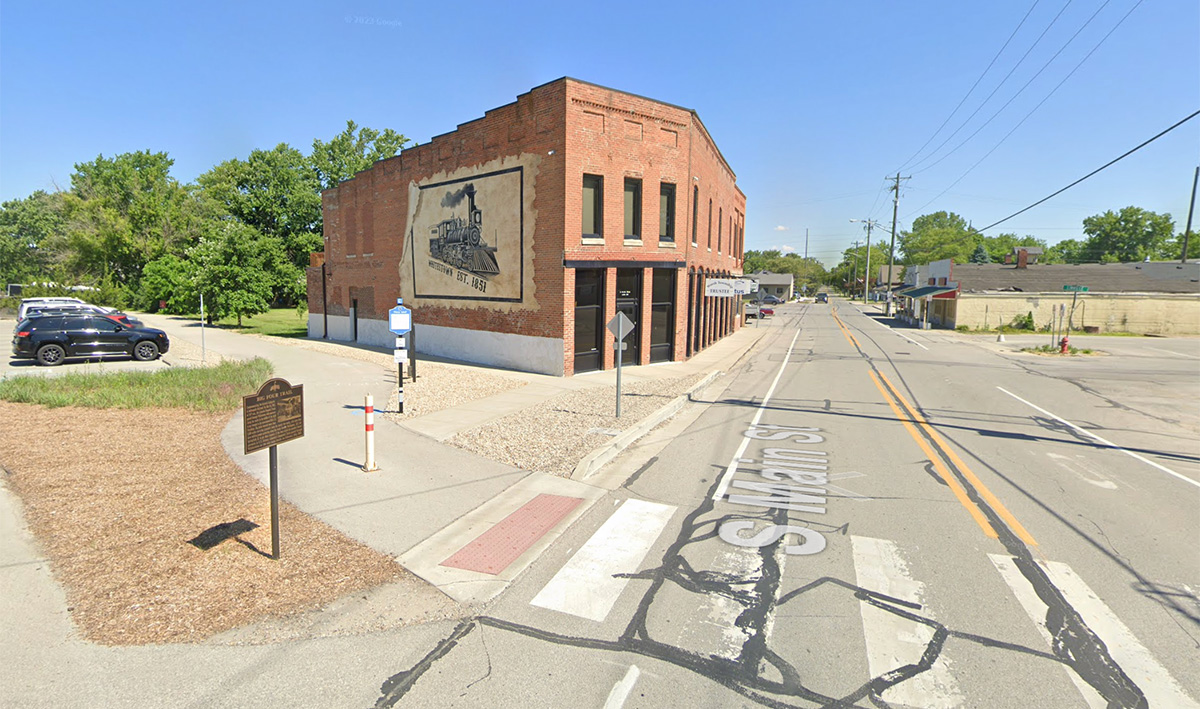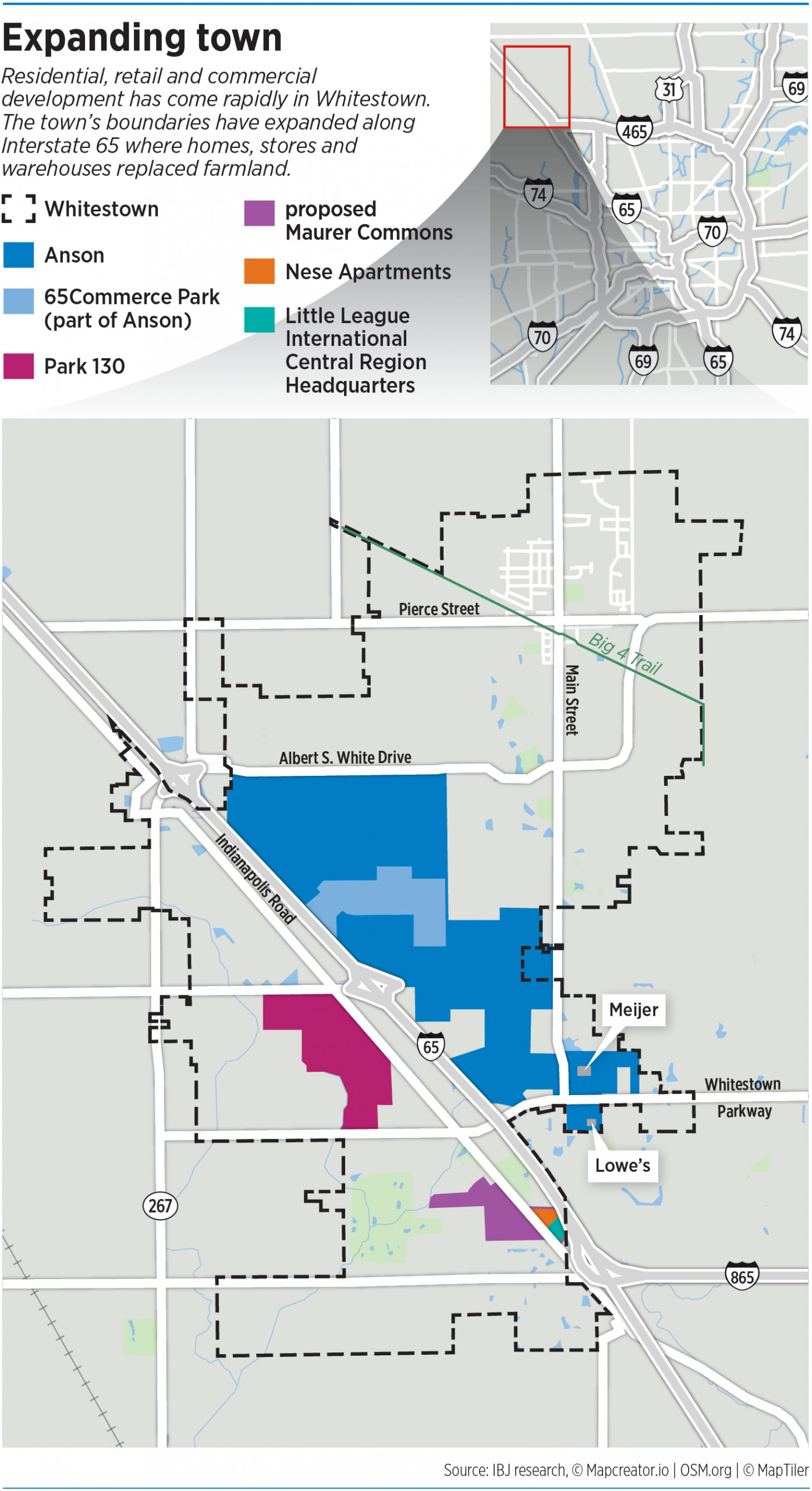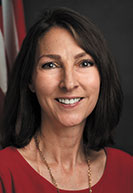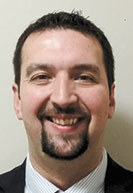Subscriber Benefit
As a subscriber you can listen to articles at work, in the car, or while you work out. Subscribe NowNearly seven months ago, the Whitestown Town Council made a choice to hit pause.
Council members let the town manager go, elected a new president and said they’d work on projects already in the works, but they would take a hiatus from approving anything new as the town awaited a new council.
Now, with less than a month to go before they take office Jan. 1, the five members of Whitestown’s next town council—three new councilors and two who will start their first full terms—are preparing to get to work in Indiana’s fastest-growing community.
The Town Council and their districts will include Cheryl Hancock, 1; Dan Patterson, 2; Tanya Sumner, 3; Tobe Thomas, 4; and Eric Nichols, 5. Hancock, Patterson, Sumner and Nichols are Republicans; Thomas is a Democrat.
“We’re at the point now that we can shift gears to what do we want to look like long term and what does Whitestown want to be known for and known as?” Nichols said.
Current councilors Susan Austin, Clinton Bohm and Jeffrey Wishek did not seek reelection this year. Nichols and Sumner joined the council in June 2022 and June 2023, respectively. Nichols replaced Rob Worl, who moved to South Carolina, and Sumner succeeded Eric Miller, whom Gov. Eric Holcomb appointed this year to lead the Indiana Department of Child Services.
Nichols succeeded Bohm as council president in May, the same month the council voted 3-1 to buy out the remainder of former Town Manager Jason Lawson’s contract that was to run through Dec. 31.
Rather than appoint an interim town manager, the town set up a three-person “interim leadership team.” It originally consisted of Deputy Town Manager of Operations Nathan Messer, Public Works Director Danny Powers and Human Resources Director Katie Barr. (Messer’s last day working with the town was Nov. 17.)
Nichols said the decision to buy out Lawson’s contract was based on one primary reason: The town is going in a new direction, and it was in the community’s best interest to get an eight-month head start in transitioning to new leadership.
The buyout was approved by the Town Council on May 10, a week after the primary election when candidates supported by Lawson and Messer lost to their challengers. Nichols said those results sent a message that the time was right to make a change and that a majority of voters weren’t happy with the direction Lawson and Messer were taking the town.
There was “obviously a misalignment between how existing leadership saw the town moving forward and how the people spoke in voting as to which way they wanted the town to go forward,” Nichols said.
“The key was the direction, and it didn’t make sense to spend eight months spinning our wheels. And so it made better sense to do the buyout and start making changes internally on that timeline and then preparing for what happens next with the new council,” he added.
Lawson, who now works for the city of Lebanon, declined an interview with IBJ for this story.

New leader
Hiring a town manager will be one of the first tasks on the agenda for the new council. Unlike an elected mayor, a town manager is appointed by the council.
The position is posted online with an annual salary of up to $110,000. Sumner said she hopes to begin interviewing candidates soon, with the new town manager beginning work sometime next month.
Sumner added that she and other councilors are looking for “a strong leader who will not micromanage and [will] improve morale.” Nichols said councilors will also consider how well-versed a candidate is in economic development and whether the town might need to add a position specifically focused on that area.
“Does our town manager have the knowledge and capacity for that, or do we need to look for somebody to fill a role like that as well?” Nichols said.
University of Indianapolis political science professor Gregory Shufeldt said a town manager serves as a CEO of local government, with duties that include creating the town’s budget and running day-to-day operations.
“This is more of a civil-servant type of position that is supposed to be able to kind of stay regardless of who’s in charge—and is running the day-to-day operations of the city at the pleasure of the council,” Shufeldt said. The position tends to be bureaucratic, he said, not “an outwardly political position” like a mayor.
Patterson said Whitestown’s next town manager should support the vision for the town’s growth and development. During the election campaign, Town Council candidates heard from voters who were concerned about development, such as warehouse projects that encroach on residential areas, that did not fit the town’s comprehensive plan. Whitestown development has been warehouse-heavy for some time.
“We want to make sure that any town manager that comes on board shares the vision for what we see for the future of the town and can help facilitate it,” Patterson said.
Changes coming
Growth and development have come fast to Whitestown.
 The community west of Zionsville, along Interstate 65, has grown from fewer than 500 residents in 2000 to nearly 12,000, according to the U.S. Census Bureau. Most of that growth has come in the last decade, and town officials believe population will reach 25,000 in the next decade.
The community west of Zionsville, along Interstate 65, has grown from fewer than 500 residents in 2000 to nearly 12,000, according to the U.S. Census Bureau. Most of that growth has come in the last decade, and town officials believe population will reach 25,000 in the next decade.
Residential, retail and industrial growth is most evident near I-65’s Exit 130, in the $1 billion, 1,700-acre Anson mixed-use development that includes the $250 million, 2.7-million-square-foot industrial 65Commerce Park. On the southern edge of Anson, two big-box retailers—Meijer and Lowe’s—have spurred more retail.
Park 130, southwest of Anson, covers 170 acres and includes six industrial facilities ranging from 40,000 square feet to more than 700,000 square feet.
Nichols said one of the biggest changes residents can expect from the new town council is a more deliberate and longer-term approach to development. The previous development strategy was “take it as it comes,” he said.
He expects to have conversations with developers next year about for-sale housing, a redesigned downtown (known as the “Legacy Core”), boutique and experiential restaurants and shops, and amenities like theaters, an amphitheater, art and other quality-of-life elements.
“What we’ve seen people want is more of a coordinated development and a plan for, ‘What do we want Whitestown to look like in 10, 20, 30, 40 years?’ and let’s target that and target development towards that rather than a much more short-term, ‘Here’s what’s been put in front of us; do we want it or not?’ kind of approach that we’ve seen in the past,” he said.
Hancock, the new District 1 councilor, said she also wants to work on improving the town’s infrastructure, specifically its overburdened road system. She said the incoming councilors “all agreed that development seemed largely out of control.”
“I am not opposed to new development but do feel that it must be done in a responsible manner consistent with the wishes of our affected residents,” she said. “Utility infrastructure has mostly kept pace with the growth as the developers absorbed much of that cost, but transportation issues have plagued the town and resulted in many frustrations for our residents [in] their daily travels.”
Target areas
Legacy Core is the closest thing Whitestown has to a downtown and is centered around the intersection of Pierce and Main streets.
Whitestown has spent several years reviving the area, which fell into dormancy after Conrail in 1976 abandoned the stretch of the Big Four Railroad that ran from Lebanon to Zionsville, through Whitestown. That work has involved making public investments in restoring buildings and constructing the Big 4 Trail.
Businesses like Moontown Brewing Co., a 15-barrel brewhouse that opened in 2018 in the historic Whitestown High School gym, have added activity and vibrancy to downtown. It is the only brewery in Whitestown and one of two in Boone County—along with Klooz Brewz in Lebanon.
Nichols said continued Legacy Core revitalization will be a focus for the new town council. He envisions additional restaurants, shops and businesses taking space in buildings that date to the mid-19th century.
“We’ll start planning then as well how Legacy Core shapes out to really become a destination for not only Whitestown residents, but others across the area,” Nichols said.
He said he foresees a shift from warehouse construction to a focus on smaller commercial facilities that emphasize flexible space. He added that people in town expressed a desire for more shopping, services and parks.
“We’ve been lucky enough to have great growth,” Nichols said. “But we’re working then to catch up the infrastructure to go with it. You have to grow first, get the tax base, and then use that tax base in order to develop out. And, so, getting infrastructure caught up will be a big one.”
Sumner, the District 3 councilor, said the new council will also focus on public safety, an area she said needs to strengthen as Whitestown continues to grow. And she said the new councilors have similar goals to add more green space and parklike amenities throughout town.
Whitestown has fewer than 100 acres of parkland, while neighboring Zionsville boasts more than 500 acres.
“We have so much possibility as we grow to create the identity and the kind of community we want to be, and that’s really exciting,” Sumner said. “To grow the way we want to grow and make it a really dynamic and engaging place where people want to visit and want to live.”
Thomas, who will represent new areas of Whitestown west of I-65, said he is going to push for more amenities in his district. District 4 is the only one completely west of the interstate. He said that makes reaching other areas of town difficult for residents of his district who might not have easy access to a vehicle.
Thomas’ district includes Little League International’s Central Region headquarters, which opened in 2021. Just north of that complex are the 240-unit Nese Apartments. And Whitestown’s plans for the former Wrecks Inc. junkyard include a $20 million aquatic facility and a 93-acre redevelopment project by Indianapolis-based Milhaus called Maurer Commons that would have housing, retail and recreational facilities.
“We don’t have really any amenities in District 4,” he said. “My goal is to have something available for us, such as parks, ballfields, things where residents can actually enjoy being in this district.”
And Patterson, the District 2 councilor, said Whitestown can look to communities such as Avon, Fishers and Westfield for lessons in how to handle growth and what to avoid.
“There’s a lot of lessons to be learned, both positive and negative, the do’s and the don’ts,” he said. “We can use those examples to make sure that, as we forge ahead, we’re doing it in an intelligent way that isn’t just putting the cart before the horse or rushing headlong into it but rather making sure that it’s planned and that we are retaining our vision throughout—not just having knee-jerk reactions.”•
Please enable JavaScript to view this content.







Whitestown should become a city. There’s little change of successfully pursuing a long term development strategy in the absence of an elected mayor.
It’s gonna grow anyway better get busy helping.
My comment to Mr Thomas, if folks move far out to the suburbs, they need to have cars and access to cars. One can’t bring an urban car-less mentality and then expect all to change for them.
The city manager makes 20k more than the mayor of Indianapolis? Hysterical
It is really unfortunate and detrimental to the image of what Whitestown is with them, bypassing the old downtown in favor of rampant development to the south.
Who is Whitestown? What is Whitestown? If one photo would represent Whitestown, what would it be? Meijer? Lowes? The countless cookie cutter, housing developments? Not to mention the traffic congestion on Whitestown Parkway with the current population expected to double by 2030?!
These people better have the experience, intelligence and intestinal fortitude to plan the next decade wisely. They certainly have their work cut out for them.
Totally agree, Urban Sprawl needs to be curbed, but it’s not going to happen any time soon.
Should do an article about Urban Sprawl and how it’s bad for infrastructure and building uncontrollably is a bad thing.